Censorship
Top 10 Most Ridiculous Examples of Video Game Censorship!
Censorship refers to the suppression or removal of art and ideas. Governments, private organizations, and even individuals can engage in the practice. The Comics Code Authority, the MPAA, and the ESRB are examples of self-regulatory bodies that have effectively held the power to suppress ideas despite holding no legal authority. In other cases, companies can be pressured to censor their own work in order to avoid controversy or lawsuits. Language, sex, violence, and references to illegal activities are the most frequent targets of censorship. In many cases, video games are censored due to cultural differences between regions. What is considered appropriate in Japan may not necessarily be appropriate for American audiences, and vice versa. It’s understandable why companies feel the need to censor, but it’s usually counterproductive and unnecessary. This list specifically looks at the most ridiculous cases of censorship in gaming history.
Examples: ABC Bans Fonzie’s Leather Jacket, 1931 Ban on Cartoon Udders, Japan’s Pixelated Porn
10
Mike Tyson’s Punch-Out!!
1987
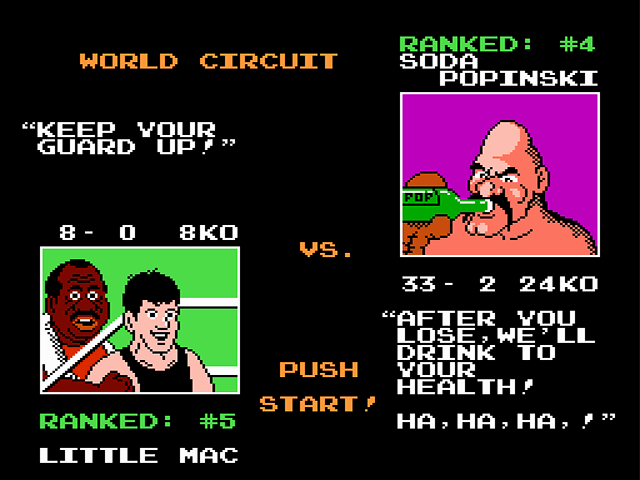
It’s a well-known fact that Soda Popinski from Punch-Out!! was known as “Vodka Drunkenski” in the original arcade version. The reason for the name change is pretty obvious. On one hand, I can completely understand why Nintendo would be weary of promoting alcohol in a product marketed to children. On the other hand, the censors sort of half-assed the entire thing. Even though Mr. Popinski was given a name change, his in-game quotes gave the impression that he was still a drunk. Some of his memorable quotes include: “I can’t drive, so I’m gonna walk all over you!”; “I’m gonna make you feel punch drunk!”; “After you lose, we’ll drink to your health! Ha,ha,ha!”; and “I drink to prepare for a fight. Tonight I am very prepared!” You really don’t have to read too much into things to deduce that Soda Popinski is a raging alcoholic despite his non-alcoholic name. There are other reasons why Nintendo might have been compelled to change the name. By and large, the characters in the Punch-Out!! series are based on well-known racial stereotypes. The game contains a Frenchman who can’t win a fight, a fat Polynesian, and an Indian who actually wears a turban in the ring. Vodka Drunkenski obviously played to the “drunk Russian” stereotype. The joke was completely lost when he was given a name change, however, since Russians aren’t typically known for drinking excessive amounts of soda pop. Punch-Out!! just isn’t the same without casual racism.
9
Ice Climber
1985
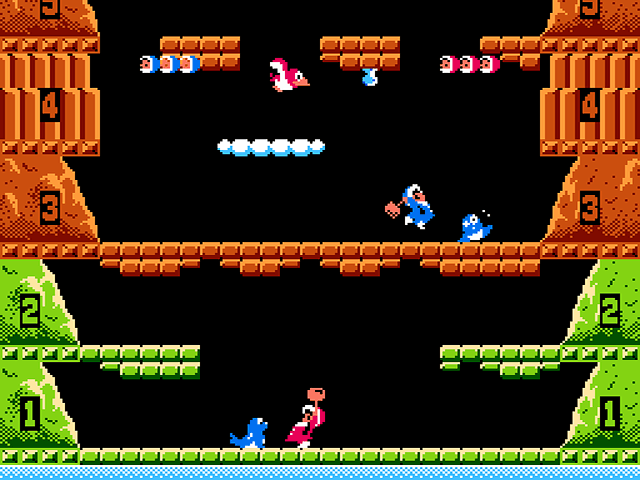
Ice Climber stars two Eskimos who work their way up various mountain summits in order to recover stolen food. Along the way, they use wooden mallets to break through ice and to defend themselves from a variety of enemies. Adorable seals were among the enemies in the original Japanese version of the game, but they were removed in the western release and replaced with small yeti-like creatures. Seal clubbing is a controversial issue that attracts significant media coverage, and adorable seal pups have become iconic symbols for conservation and animal rights advocates. It’s not hard to imagine how the media would have reacted to a game that allowed children to wallop seals with mallets. Nobody is going to express concerns over an ugly (and completely fictional) yeti, but baby seals were a protected species as far as Nintendo of America was concerned. Players still had carte blanche to assault polar bears, however. Polar bears are currently listed as a threatened species under the Endangered Species Act, but the seal population is over three times larger than it was in the 1970s. Maybe Ice Climber should have censored the polar bears too.
8
Wario Land II
1998
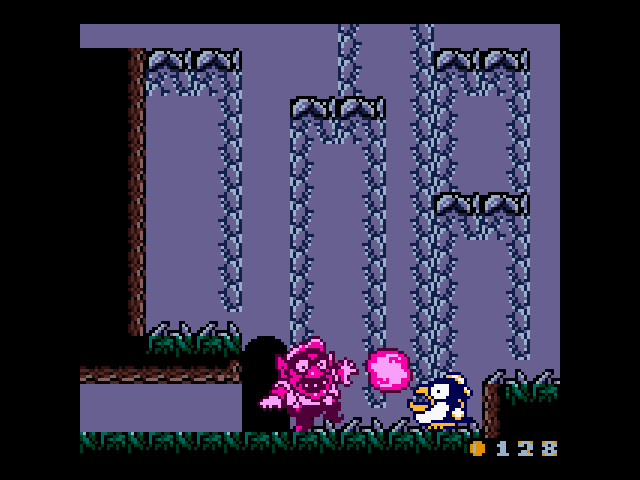
In Wario Land II, our favorite anti-hero becomes drunk after coming into contact with beer. While in his inebriated state, Wario stumbles around and belches at his enemies until the effects wear off. If you don’t remember this aspect of the game, it’s probably because you never played the Japanese version. In the localized version of the game, Wario becomes “crazy” after being hit by “crazy balls.” The manual simply explains that Wario will “act really strange” after being hit by one of these balls. It’s not unusual for alcohol references to be censored, but I’m sure Nintendo of America could have been a little more creative. I’m not entirely sure why Nintendo would go through the trouble of censoring out an alcohol reference only to replace it with a politically incorrect term like “crazy” in the first place. In subsequent Wario Land games, Nintendo opted to use a “dizzy” version of Wario instead of a drunk or crazy one.
7
Bionic Commando
1988
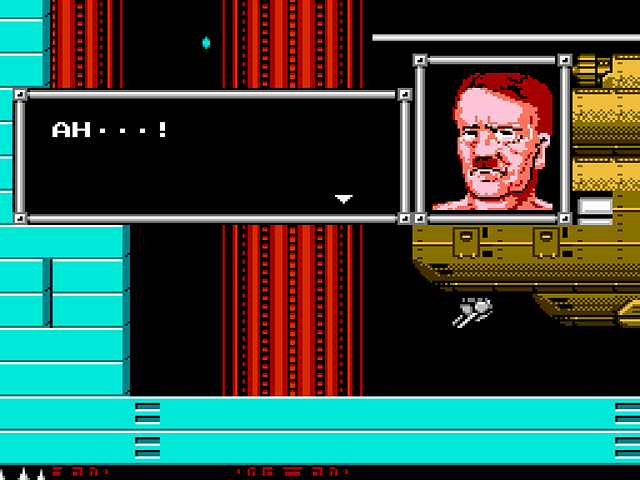
There were several differences between the American and Japanese versions of Bionic Commando. In Japan, the plot revolved around a group of imperialist Nazis who were attempting to revive Hitler. In fact, the game was known as Top Secret: Hitler’s Revival on the other side of the Pacific. For the American version, all references to Nazism were removed. (You certainly wouldn’t want kids to grow up thinking Nazis were evil.) The swastikas that were scattered throughout the game were replaced with generic bird symbols, and the Nazis themselves were referred to as the “Badds.” Instead of battling a revived Adolf Hitler, gamers set their sights on an ominous character named “Master-D.” The only catch was that Master-D still looked exactly like Hitler. Capcom didn’t even attempt to alter Master-D’s appearance! Many of the graphics in the game had been changed, so it’s not as though Capcom wouldn’t have been able to give Hitler a makeover to go along with his name change. Nintendo wouldn’t allow Hitler to be a part of the game’s plot, but somehow his likeness was able to sneak past the censors. Ultimately, a game that supposedly had nothing to do with Nazism ended with a surprisingly detailed animation depicting Hitler’s head exploding.
6
Lethal Enforcers
1994
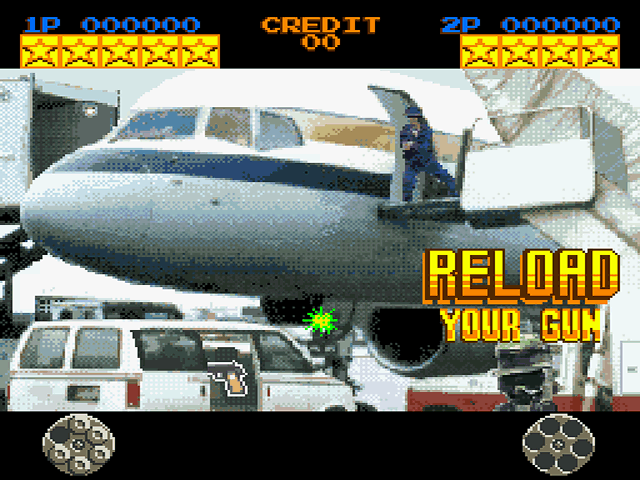
In order to adhere to Nintendo’s strict censorship policies, the SNES version of Lethal Enforcers was altered in several ways. In the arcade original, there was a stage that tasked players with stopping a gang of drug runners. In the SNES version, the references to drugs had to be removed and players had to stop a gang of gun runners instead. I can understand why Nintendo was against the glorification of drugs, but I don’t think a drug runner being shot dead by a police officer really promotes the drug trade in any way. Another minor change made in the SNES version was the removal of female criminals. This either suggests that females can’t partake in criminal behavior, or that killing men is somehow more acceptable than killing women. Bizarre policies regarding drug references and blatant sexism are bad enough, but the main reason Lethal Enforcers is on this list is due to the manner in which the enemies react when they are shot. (Or, more accurately, how the enemies don’t react.) The enemies would actually respond when they were shot in the arcades, but on the SNES they just flash for a moment before disappearing. The game was packaged with a replica .38 Magnum, players were required to point the gun at the screen and pull the trigger, and the game was called LETHAL Enforcers. Nintendo didn’t take issue with the concept of killing people, but they apparently didn’t want to give the impression that being shot may cause a certain level of discomfort.
5
Final Fantasy Legend II
1991
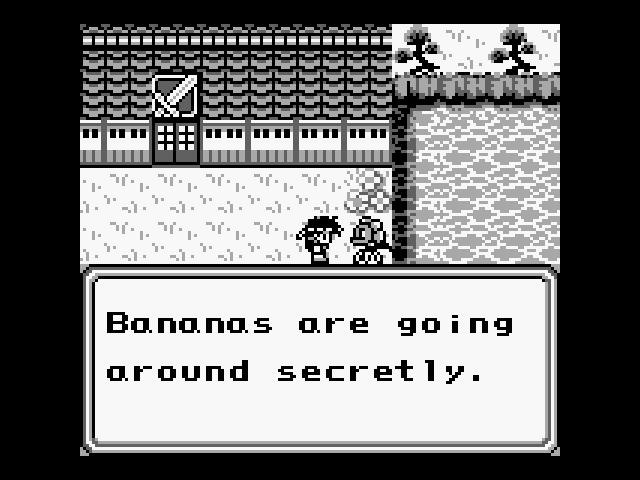
In the Japanese version of Final Fantasy Legend II, a notorious gang of criminals was involved in a massive drug smuggling ring. Because Nintendo of America’s censorship policies prohibited any references to drugs, changes had to be made for the American version. Instead of smuggling opium, the criminals in the American version were smuggling bananas! It’s unclear as to whether bananas were considered illegal in the game or if the criminals were simply trying to avoid paying government tariffs. In either case, the prospect of stopping a banana smuggling operation probably doesn’t motivate many gamers. Maybe it’s just me, but smuggling bananas simply doesn’t seem as dastardly as smuggling drugs. At the very least, Square could have come up with a less popular item for the criminals to smuggle. If the criminals were transporting eggplants instead of bananas, then I might be more compelled to stop them.
4
Duke Nukem 64
1997
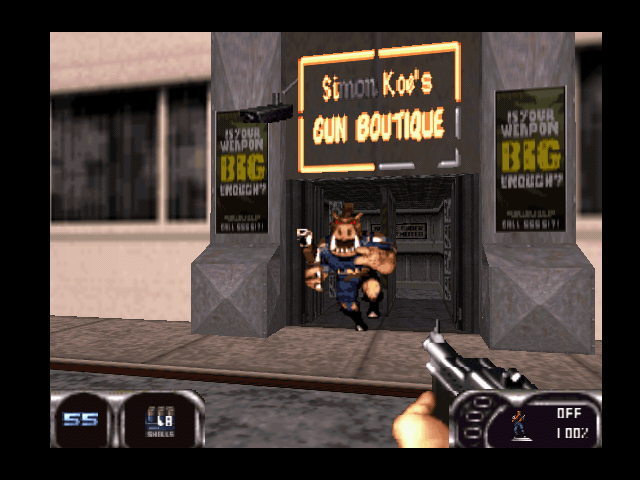
The original PC version of Duke Nukem 3D was known for its crude humor and mature subject matter, so many were curious as to how much of the game’s content would be retained when the game was ported to the Nintendo 64. Some of Duke’s more vulgar sound bites were edited and a steroid reference was removed, but the most significant change in the Nintendo 64 version was the removal of sexual content. For example, the PC version contained a memorable stage called “Red Light District” which featured a strip club and an adult book store. The stage was renamed “Gun Crazy” for the Nintendo 64 version, and the developers took a proverbial bulldozer to the x-rated establishments and replaced them with a gun store. The powers that be decided that it wouldn’t be appropriate to expose impressionable youngsters to slutty women, but they had no problem selling violence and death. The disturbing trend of censoring sex while promoting violence is often seen in Hollywood films, and games like Duke Nukem 64 made it clear that the video game industry was going to follow down the same road.
3
Final Fight
1989
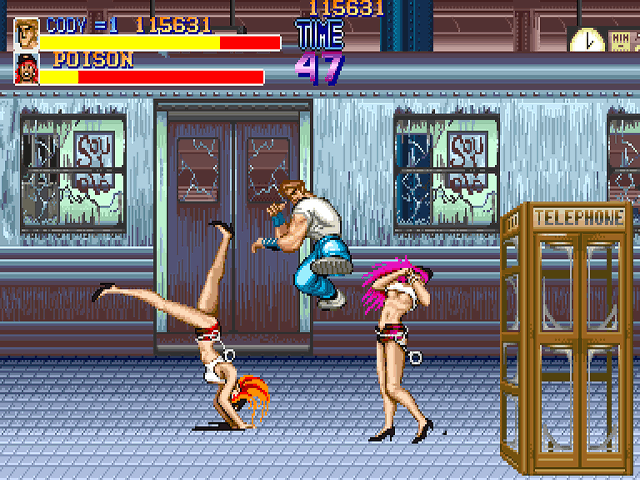
One of many recurring enemies from the Final Fight series, Poison has been the center of censorship on more than one occasion. For instance, she was given more clothing in the Sega CD version of the game and replaced in the SNES version altogether. Neither of these cases could really be described as “ridiculous,” though. The censorship that occurred during Poison’s conception, on the other hand, is downright absurd. Everything about her design suggests that she is a female. She has long legs, pink hair, an hourglass figure, and a nice rack. Indeed, Poison was always intended to be a female character. However, since hitting women was frowned upon, Capcom decided to say she was transgender instead. Nothing about her design was changed. Poison still looked like a woman, and there were no dialogue changes to imply that she was biologically male. Remarkably, calling Poison transgender was enough to shield Capcom from the potential “violence against women” backlash.
2
Mortal Kombat
1993
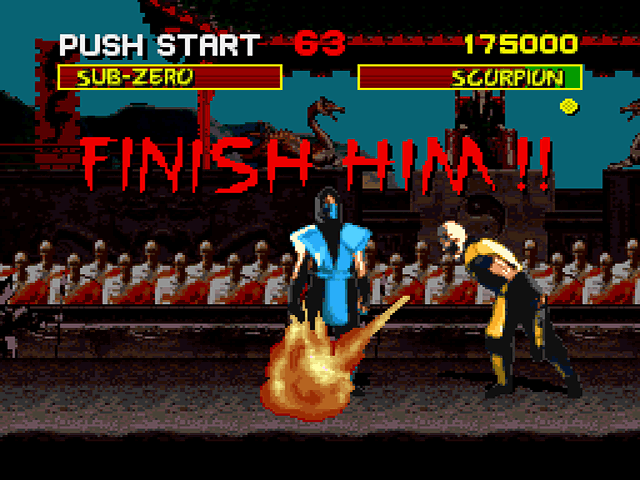
Mortal Kombat did a lot of things to differentiate itself from other fighting games, but it’s fair to say that most of its notoriety came from its violent content. Excessive amounts of blood would fly with nearly every punch, kick, or special move. Mortal Kombat also introduced the concept of “Fatality” maneuvers which resulted in the on-screen death of one of the characters. In 1992, the concept of killing realistic-looking human characters in a video game was pretty shocking, and the game garnered a lot of controversy as a result. This controversy was even more apparent when the game was ported to home consoles in 1993. Concerned watchdog groups got involved, and the topic of violent video games was soon being discussed in the United States Congress. Sega and Nintendo used different means to shield themselves from potential backlash. Sega introduced a self-imposed ratings system to coincide with the release of the Genesis version and required players to enter a “blood code” in order to unlock some of the game’s more graphic content. Nintendo decided it would be best to remove the blood altogether. Characters in the SNES version would no longer bleed after being hit (although they would sweat excessively). More significantly, Nintendo required many of the original finishing moves to be edited. Nintendo didn’t take issue with the “fatality” concept in of itself though, and they had no problem with characters killing each other providing that no blood was spilled. Ripping out vital organs and decapitations were off limits on the SNES, but Nintendo had no issue with electrocutions, deadly fire, or a character freezing his opponent into a block of ice and shattering him into little pieces. With Mortal Kombat, Nintendo seemed to suggest that murder was alright as long as it wasn’t too messy.
1
Resident Evil: Director’s Cut
1997
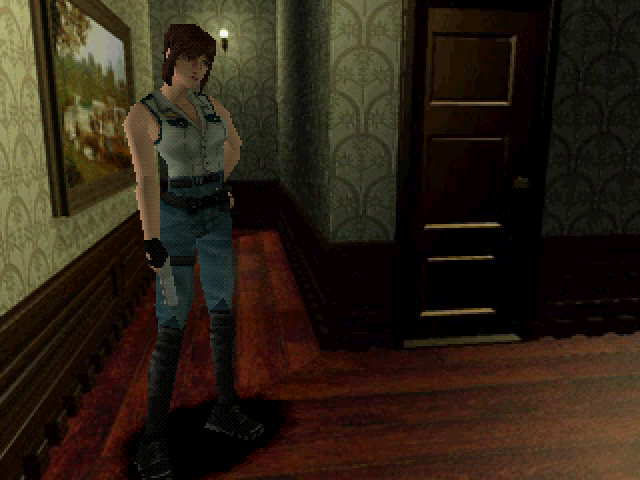
To help fill the void created by the delay of Resident Evil 2, Capcom released a “Director’s Cut” of the original Resident Evil in the fall of 1997. This updated version featured new camera angles, different enemy placements, more weapons, and new outfits. One of the game’s most heavily-promoted features was the inclusion of cinema scenes from the Japanese version that had previously been censored in the west. However, when Resident Evil: Director’s Cut was finally released in North America, the footage was still censored! Capcom claimed that the error was the result of a localization mistake and offered the uncensored videos as a free download from their website. (Keep in mind that broadband connections weren’t common place in 1997, so Capcom was actually expecting consumers to use their 56K modems to download content that should have been included on the disc in the first place.) There are several cases of ridiculous censorship on this list, but Resident Evil: Director’s Cut deserves a special mention for being the only case of accidental censorship.

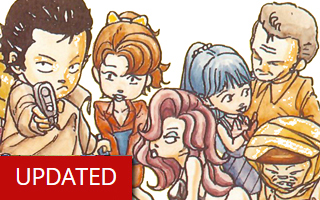
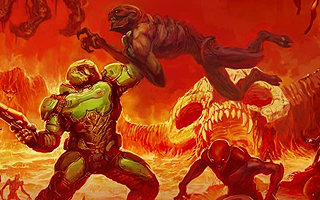
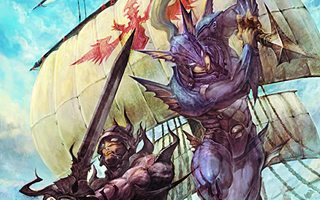
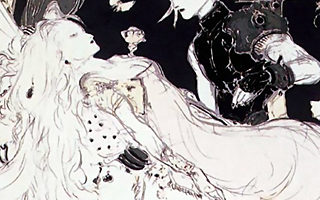
Do you agree with this list? Let us know what you think by leaving a comment below. Your opinion matters!